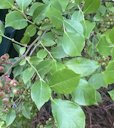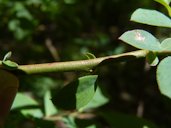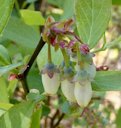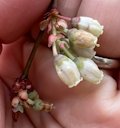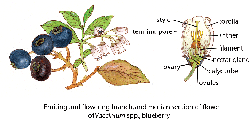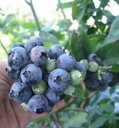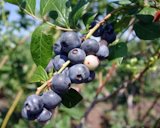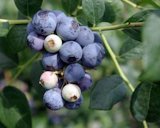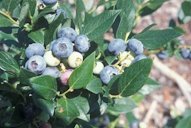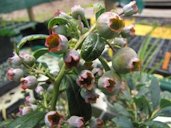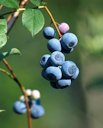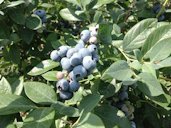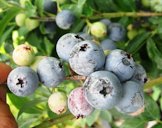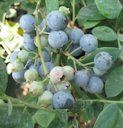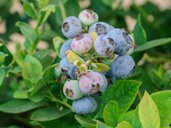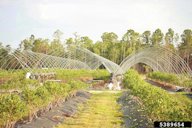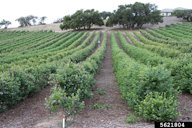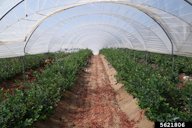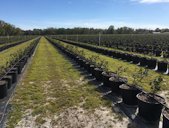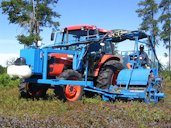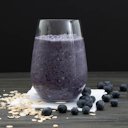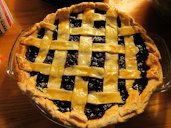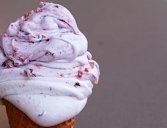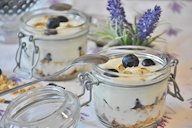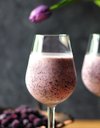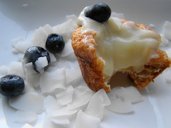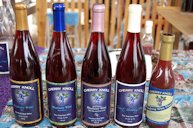| Blueberry - Vaccinium spp. | |||||||||||||||||||||||||||||||||||||||||||||||||||||||||||||||||||||||||
|---|---|---|---|---|---|---|---|---|---|---|---|---|---|---|---|---|---|---|---|---|---|---|---|---|---|---|---|---|---|---|---|---|---|---|---|---|---|---|---|---|---|---|---|---|---|---|---|---|---|---|---|---|---|---|---|---|---|---|---|---|---|---|---|---|---|---|---|---|---|---|---|---|---|
 Fig. 1  Vaccinium hybrid Cv Jubilee fruit, Hawea Pl Olinda, Maui, Hawai'i 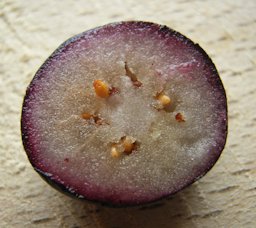 Fig. 2  V. corymbosum, fruit section 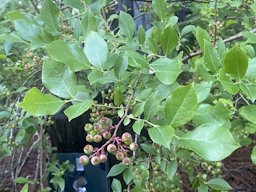 Fig. 3  Southern highbush blueberry, Manns Chapel Rd, Chapel Hill, NC, US 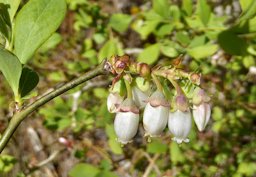 Fig. 10  SHB V. formosum, Baker, Baker, FL, US 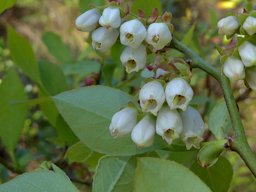 Fig. 11  SHB, Baker FL, US 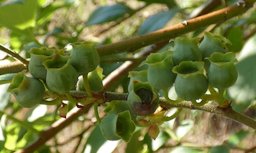 Fig. 12  SHB, Screven County, GA, USA  Fig. 13  SHB, Screven County, GA, USA 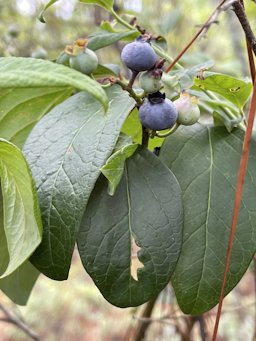 Fig. 17  Southern highbush blueberry, Red Bud Ln, Trenton, SC, US  Fig. 18  Vaccinium hybrid Cv Misty fruit, Hawea Pl Olinda, Maui, Hawai'i 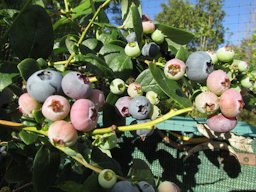 Fig. 19  Vaccinium hybrid Cv Emerald fruit, Hawea Pl Olinda, Maui, Hawai'i 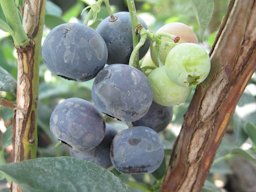 Fig. 20  Brightwell blueberry bush “Rabbiteye”  Fig. 21  Chaucer blueberry bush “Rabbiteye” 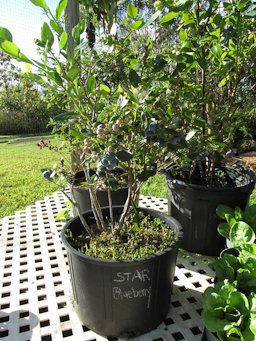 Fig. 33  Vaccinium hybrid (Blueberry) Cv Star in pot, Hawea Pl Olinda, Maui, Hawai'i 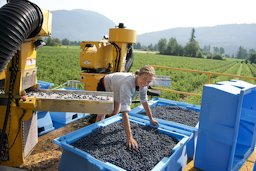 Fig. 34  Machine picking blueberries near Agassiz, British Columbia, Canada 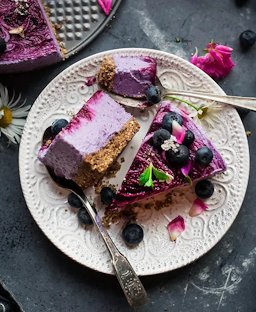 Fig. 42 No bake vegan blueberry cheesecake  Fig. 43 Blueberry vegan cheesecake |
Scientific
name Vaccinium Spp. Pronunciation vak-SIN-ee-um 14 Common name(s) English: highbush blueberry, southern blueberry, southern highbush blueberry, swamp highbush blueberry; Finland: Pensasmustikka; French: airelle d'Amérique, bluet en corymbe, myrtille arbustive, grande myrtille, myrtille américaine; German: amerikanische Blueberry; Nederlands: Blauwe bes; Polish: Borówka wysoka; Serbian: Sjeverna visokožbunasta borovnica; Spanish: arándano americano, arándano azul; Swedish: amerikanskt blåbär 13 Relatives Cranberry, Vaccinium macrocarpon; Darrow's blueberry, V. darrowii; deeberry, V. stamineum; evergreen blueberry, V.myrsinites; sparkle blueberry, V. arboreum; huckleberry, Gaylussacia spp.; strawberry tree, Arbutus unedo; Florida rosemary, Ceratiola eicoides 2,11 Family Ericaceae (heath family) Origin Eastern north America - New Jersey to Florida and Alabama USDA hardiness zones Southern highbush 5-9; rabbiteye blueberry 7-10 Uses Food; landscape; folklore medicine Height SHB 6-8 ft (1.8-2.5 m) Rabbiteye can reach 12–15 ft (3.5-4.5 m) 1 Spread Rabbiteye canes sprouting over an area of 8–10 ft (2.5-3 m) 1 Plant habit Decidious woody perennial Trunk/bark/branches Shrub with cane growth; young stems yellowish-green, and red during the winter; old stems are brown and exfoliating 8 Pruning requirement Plant size can be controlled to some degree by pruning; removal of weak wood and older, unproductive canes 1,10 Leaves Simple; arranged alternately on the stem; ovaloid; 1–3 in (2.5-7.6 cm) in length 8 Flowers Whitish-pink in a bell shape; hermaphrodite; (Feb.-) Mar.-June, sporadically in the southern portion of its range 8 Fruit Epigynous or “false” berry; dark blue with a "glaucous bloom"; (Apr.-) May-Oct. 8,10 Season (in Florida) Rabbiteye: May to July, depending on the cultivar; southern highbush: mid-apr. to mid-may, depending on the cultivar 1 Light requirement At least 4–5 hours of full sun per day; tolerates some shade 1 Soil tolerances Well-drained, acidic soils with high organic matter content pH preference 4.0–5.5 1 Soil salt tolerance SHB blueberries are very salt-sensitive plants Cold tolerance Open flowers of all types are killed at 28 °F (-2 °C) 12 Plant spacing Southern highbush 3 ft (1 m) apart; rabbiteye 5 ft (1.2 m) apart 1 Roots Shallow, fibrous root systems with no root hairs 5 Invasive potential * None reported Known hazard None Reading Material Blueberry Gardener's Guide, University of Florida pdf Organic Blueberry Production in Florida, University of Florida pdf Blueberry (Vaccinium spp.) is one of the few cultivated fruit crops that is native to North America. Canada and Maine have large expanses of native lowbush blueberries (Vaccinium angustifolium and V. myrtilloides) in naturally occurring barrens that are managed and harvested for the processing market. Cultivated blueberries in the United States consist of: • highbush blueberry (V. corymbosum), grown primarily in Michigan, New Jersey, Oregon, Washington, and North Carolina; • rabbiteye blueberry (V. virgatum), grown throughout the southeastern United States; and • southern highbush blueberry (interspecific hybrids of V. virgatum, V. corymbosum, and V. darrowi), grown primarily in Florida, Georgia, and southern California. 6 Generally, rabbiteyes are the best choice for areas north of Lake City and southern highbush blueberries are usually preferred for areas south of Ocala. Only the low-chill cultivars that have been specifically bred for mild climates are suitable for Florida. 1 Florida Blueberry Season Means Yummy Fruit for Consumers, UF/IFAS, Specialty Crop Grower Rabbiteye Blueberry, Floridata Distribution The United States is the largest producer of blueberries globally, as well as a major source of organic blueberries. According to the 2019 USDA Certified Organic Survey, there were 539 organic blueberry farms in the United States (10,300 acres). 5 Cultivated blueberries: highbush blueberry (V. corymbosum), grown primarily in Michigan, New Jersey, Oregon, Washington, and North Carolina; rabbiteye blueberry (V. virgatum), grown throughout the southeastern United States; and southern highbush blueberry (interspecific hybrids of V. virgatum, V. corymbosum, and V. darrowi), grown primarily in Florida, Georgia, and southern California. 6 In Florida, the north central area includes Alachua, Marion, Putnam, Sumter, and Lake Counties and accounts for about 40% of the blueberry acreage planted for commercial shipping in Florida. The south central area includes Highlands, Hardee, Desoto, Manatee, and Sarasota Counties and consists of approximately 25% of the total acreage. The central Florida production region includes Polk, Orange, Pasco, Hernando, and Hillsborough Counties and accounts for approximately 30% of the total acreage. 6 Description The blueberry is the quintessential North American berry and is a superb dooryard fruit. It bears an abundant crop on a handsome, compact bush. However, most varieties require exposure to weeks of cold temperatures to stimulate growth, flowering and fruit set.The development of low-chill varieties has given residents of central Florida the opportunity to harvest a backyard blueberry crop. 2
Fig. 4. Anatomy of a blueberry plant Leaves
Fig. 5,7. Southern highbush blueberry Vaccinium formosum, Manns Chapel Rd, Chapel Hill, NC, US Fig. 6. SHB, Red Bud Ln, Trenton, SC, US Fig. 8,9. SHB, North Carolina, US Flowers For all species – White or cream flowers (1-16, usually 7-10) are borne on short racemes (1-2 inches), on upper portion of 1-yr-old wood. Flowers are urn-shaped and inverted, on very short pedicels (nearly sessile), with inferior ovaries. 12 The removal of flowers from 1-year-old plants will encourage vegetative growth and generate larger bushes in year two. 18
Fig. 14. Southern highbush nlueberry V.formosum, Baker, Baker, FL, US Fig. 15. SHB V. formosum, Stafford, VA, US
Fig. 16. Floral diagrams of pollinator dependent crops, FAO Reproduced with permission Reproductive Growth and Development of Blueberry, University of Florida pdf Pollination Most blueberry cultivars grown in Florida are self-unfruitful; they require cross-pollination from another cultivar of the same type (southern highbush with southern highbush and rabbiteye with rabbiteye). 1 Insect pollinators are necessary for all cultivars regardless of selfing. Pollen not readily released without insects. Wind pollination not effective. 9 Blueberry pollinators are honey bees, bumble bees, southeastern blueberry bee, carpenter bees and other native wild bees. 4 Pollination Best Practices in Southern Highbush Blueberry in Florida, University of Florida pdf Good Pollination Practices in Florida Blueberry Fields, University of Florida pdf Fruit The fruit is 0.2-0.6 in. (5–16 mm) in diameter with a flared crown at the end; they are pale greenish at first, then reddish-purple, and finally dark purple when ripe. They are covered in a protective coating of powdery epicuticular wax, called a “bloom”. They have a sweet taste when mature, with variable acidity. Fruits are high in antioxidants and vitamins A and C, with a low glycemic index. 15 Southern Highbush – blue-black color; good to excellent fruit quality. Shortest period from flowering to maturity of all blueberries (45-75 days). 12 Rabbiteye – blue-black color; good fruit quality, Fruit mature in about 90 days from bloom, so despite earlier bloom date than Highbush, fruit ripen later. 12 Ripe berries will remain attached for several days or weeks, and sugars continue to accumulate. 12 Cultivars In central or south Florida, southern highbush cultivars are preferred over rabbiteyes. Southern highbush blueberries are best suited to Central and South Central Florida since they aren’t as cold tolerant as rabbiteye. 7 SHB cultivars available in Florida: 'Emerald', 'Jewel', 'Star', 'Windsor', 'Springhigh', 'Sweetcrisp', 'Farthing'. Rabbiteye cultivars, as a group, are easier to grow than southern highbush. 1 While less winter cold-hardy, rabbiteye blueberries are more drought and heat resistant and will tolerate a wider range of soil types than highbush, making them easier to establish and grow successfully. 16 Rabbiteye cultivars: 'Beckyblue', 'Bonita', 'Austin' and 'Climax' (early-season); 'Brightwell', 'Powderblue', 'Tifblue', 'Woodard', 'Chaucer' and 'Bluegem' (mid- to late-season). Some cultivars are hardy to USDA zone 10: 'Sharpblue', 'Georgia Gem', 'Sunshine Blue', 'Misty', Gulfcoast' and 'Biloxi'. 1
Fig. 22. Sharpblue blueberry bush “Southern Highbush” Fig. 23. Springhigh blueberry bush “Southern Highbush” Fig. 24. Sweetcrisp blueberry bush “Southern Highbush” Fig. 25. Windsor blueberry bush “Southern Highbush” Fig. 26. Southern highbush cv Sunshine fruit, Hawea Pl Olinda, Maui, Hawai'i Fig. 27. Southern highbush cultivar called Biloxi Fig. 28. Beckyblue blueberry bush “Rabbiteye” Fig. 29. Climax blueberry bush “Rabbiteye” Fig. 30. Bluegem blueberry bush “Rabbiteye” Fig. 31. Powderblue blueberry bush “Rabbiteye” Fig. 32. Tifblue blueberry bush “Rabbiteye” Southern Highbush Blueberry Cultivars from the University of Florida, University of Florida pdf Cultivar Releases from the University of Florida Breeding Program Harvesting The major incentive for growing blueberries in Florida is the strong market for fresh blueberries that ripen before May 10. Historically, southern highbush blueberries from peninsular Florida are the first blueberries to ripen in North America. However, recently significant blueberry production has occurred in Mexico during March, April, and May. Mexican blueberry imports to the U.S. during this period have increased in recent years and pose a significant threat to the Florida blueberry industry. Beginning in mid-May, Georgia and North Carolina blueberry harvests begin and prices typically decline to the point where commercial production under Florida conditions is not profitable. 6 Berries are picked over several times by hand for fresh sales, and mostly machine harvested for processing. 12 Highbush blueberries will be of best quality when picked every 5-7 days depending upon temperature. Rabbiteye flavor improves if berries are picked less often; about every 10 days allows for maximum flavor with few soft overripe fruit. 16 With good pollination, berry yields of 2–5 pounds per plant may be expected by the third or fourth year. 1 Propagation Blueberries usually are propagated from softwood or hardwood cuttings by cutting selected twigs from healthy, disease-free mother plants. Cuttings are placed in propagation beds in a medium that holds moisture well but also allows adequate aeration. 18 Planting Both rabbiteye and southern highbush do best in acidic soils with high organic matter. To achieve this, peat moss can be applied prior to or during planting. 7 Blueberries require a well-drained soil profile of at least 18 inches in depth. 1 In Florida, blueberries are typically planted in pine bark beds on top of the soil, in soil beds amended with pine bark, or in containers with pine bark media. 5 In most situations, dooryard blueberry plants benefit from the incorporation of 1/4–1/2 cubic foot of acid sphagnum peat moss into the planting hole. 1 Introduction to Southern Highbush Blueberry Cultivation in Containers, University of Florida pdf Container Production of Southern Highbush Blueberries Using High Tunnels, Hort Science pdf Blueberry Cultivation in Soilless Substrates, Specialty Crop Grower Pruning Blueberries should be pruned at the time of planting. If plants have a well-developed root system and irrigation is used, pruning should not be severe. 1 During the first growing season, remove all flowers before fruit set occurs. This will prevent fruiting during the first year and promote strong vegetative growth and good plant establishment. 1 As plants age (four to five years or older), remove one or two older canes to stimulate new cane growth. Selectively remove weak twiggy growth from the canopy, leaving the stronger, more vigorous wood. This type of pruning is usually done in the late winter. 7 Pruning Southern Highbush Blueberry in Florida, University of Florida pdf Postharvest Pruning on Southern Highbush Blueberry in Florida, University of Florida pdf Fertilizing Blueberries respond best to frequent, light fertilization. They can be killed or damaged by over-fertilization. It is best to be conservative and gradually increase fertilizer rates as you gain experience with your soil type and the kinds of fertilizer you are using. 1 The fertilizer should be spread in an even circle around the plant no further than two feet out. Repeat this application in April, June, August, and October. 7 Nutrition and Fertilization Practices for Southern Highbush Blueberry in Florida, University of Florida pdf Fertilizing Blueberries in Pine Bark Beds, University of Georgia Extension pdf Irrigation Water requirements for blueberry plants are low during the winter. During most years, the combination of rainfall and water stored in the soil should limit the need for irrigation on moist soils between December 1 and March 1. The most critical period for irrigation of blueberry plants in Florida is from early fruit set until the end of harvest. For most cultivars, this corresponds with a period of high water use by the plants but low rainfall, meaning best results will be achieved with supplemental irrigation. 1 They cannot tolerate most well water, because of the high pH. 11 Irrigation Practices for Southern Highbush Blueberry in Florida, University of Florida pdf Cold Protection Blueberries bloom in late winter or early spring in Florida, making the flowers and young fruit highly susceptible to freeze and frost injury. Killing freezes can occur as late as mid to late March throughout Florida, long after the initiation of bloom, especially for early-ripening southern highbush blueberry cultivars. 3
Fig. 36. Equipment used to protect southern high bush blueberries from frost damage Floral Freeze Tolerance and Freezing Conditions, Agronomy, MDPI Protecting Blueberries from Freezes in Florida, University of Florida pdf Blueberry Frost Protection Practices in Florida and Georgia, University of Florida pdf Cold Hardiness and Options for the Freeze Protection of Southern Highbush Blueberry, Agronomy, MDPI pdf Weeds Weed management can be one of the most significant issues in Florida blueberry production in both organic and conventional systems. Weeds compete for water and nutrients, act as alternate hosts for disease pathogens and insect pests, and alter the plant's microclimate. 5 Mulching home blueberry plantings is the best form of weed control. Pine bark, chips or sawdust have a pH of 3.5 to 4.5 and are more desirable than the same mulches from hardwood with an associated pH above 5.0. 16 Calendar for Southern Highbush Blueberry Management in Florida, University of Florida pdf Production Southern highbush blueberries (SHB) are grown in two different production systems in Florida. In north-central and central Florida, SHB are primarily grown in a deciduous system, where the plants go dormant and defoliate during late fall or early winter. In central and south-central Florida, many SHB are grown in an evergreen system, where the plants do not go dormant, and are managed to retain their leaves from the previous year through harvest the following spring in order to support early flowering and fruit set. 13
Fig. 36. Blueberry (genus Vaccinium) L., open field blueberry production, California Fig. 37. Blueberry (Genus Vaccinium) L., high tunnel production system, California Fig. 38. Southern highbush blueberry containerized soilless substrate production with 5434 plants per hectare in south Florida Florida's Commercial Blueberry Industry, University of Florida pdf A Review for Southern Highbush Blueberry Alternative Production Systems, Agronomy, MDPI pdf Evergreen Production System for Southern Highbush Blueberries in Florida, University of Florida pdf Blueberry Production part I, Agfact, Archives RCA Blueberry Production part II, Agfact, Archives RCA
Fig. 39. Commercial blueberry field in New-Brunswick, Canada, Kubota M6800 tractor. Fig. 40. Korvan blueberry harvester; this type of harvester has the driver above the blueberry plants Fig. 41. Farm equipment, California Pests Many insects, diseases, and vertebrate pests can attack blueberries in commercial fields. Some can cause serious reductions in growth and yield, or can even cause plant death. However, most are sporadic in occurrence and normally cause little damage in small plantings. 1 Blueberry plants lend themselves to the "organic" approach of gardening, since pesticides are rarely needed in home garden plantings. 17 Florida Blueberry Integrated Pest Management Guide, University of Florida pdf Diseases Blueberry stem blight and Phytophthora root rot are major causes of plant mortality in Florida. 1 Florida Blueberry Leaf Disease Guide, University of Florida pdf Food Uses Eaten raw as fresh topping on oatmeal, pancakes, waffles or yogurt; made into a smoothie with yogurt or milk; mixed in salads; blended with a bit of water to make a fresh syrup. Cooked into pies, breads and muffins. Made into wine and vinegar.
Fig. 44. Fresh blueberry pancakes… If you make them, they will love you Fig. 45. Blueberry oatmeal smoothie Fig. 46. Blueberry pie Fig. 47. Blue, probably the best blueberry ice cream Fig. 49. Blueberry and yogurt Fig. 50. Blueberry cream wine slush Fig. 51. Blueberry coconut kreme popovers Fig. 52. Blueberry wine and vinegar Medicinal Properties ** Research concludes that the antioxidants in blueberries help protect the body against chronic diseases associated with aging. The folic acid may help guard against cervical cancer and may benefit the fetus during pregnancy. Blueberries, like cranberries, also help prevent urinary tract infections. 10 General Blueberry (Vaccinium spp.) is one of the few cultivated fruit crops that is native to North America. 6 July is National Blueberry Month. In the Heath family, all Vacciniums — all 450 or so species — have a five-pointed, star-shaped calyx that remains on the fruit. 14 Further Reading UF Blueberry Growers Guide (app ext.link) UF blueberry breeding program (ext. link) Impacts of Hurricane Damage on Southern Highbush Blueberries, University of Florida pdf Home Garden Blueberries, University of Georgia Extension pdf Blueberries, or Huckleberry’s Kin, Eat the Weeds List of Growers and Vendors |
||||||||||||||||||||||||||||||||||||||||||||||||||||||||||||||||||||||||
| Bibliography 1 Williamson, J. G., et al. "Blueberry Gardener’s Guide." Horticultural Sciences Dept., UF/IFAS Extension, Cir. 1192, Pub. Apr. 2004, Reviewed June 2015, Revised January 2012, Junly 2018 and 27 Jan. 2022, AskIFAS, edis.ifas.ufl.edu/publication/MG359. Accessed 7 July 2024. 2 Boning, Charles R. Florida's Best Fruiting Plants- Native and Exotic Trees, Shrubs, and Vines. Sarasota, Pineapple Press, 2006. 3 J. G. Williamson, and D. A. Phillips. "Protecting Blueberries from Freezes in Florida." Horticultural Sciences Dept., UF/IFAS Extension, HS968, Original pub. May 2004, Revised Jan. 2012, July 2018, July 2022, and November 2023, AskIFAS, edis.ifas.ufl.edu/publication/HS968. Accessed 8 2024. 4 Mallinger, Rachel E., and Douglas A. Phillips. "Pollination Best Practices in Southern Highbush Blueberry in Florida." Entomology and Nematology Dept., UF/IFAS Extension, IN1237, Original Pub. Jan. 2019, Revised June 2022, AskIFAS, edis.ifas.ufl.edu/publication/ENY-172. Accessed 7 2024. 5 Phillips, Douglas A. "Organic Blueberry Production in Florida." Horticultural Sciences Dept., UF/IFAS Extension, HS1400, Original Pub. Jan. 2021, Revised Apr. 2024, AskIFAS, edis.ifas.ufl.edu/publication/HS1400. Accessed 10 2024. 6 Williamson, J. G., et al. "Florida's Commercial Blueberry Industry." Horticultural Sciences Dept., UF/IFAS Extension, HS1400, Original Pub. Mar. 1997, Revised June 2015 and Aug. 2018,Reviewed 27 Jan. 2022 AskIFAS, edis.ifas.ufl.edu/publication/AC031. Accessed 10 2024. 7 "Blueberries." Gardening Solutions, UF/IFAS Extension, AskIFAS, gardeningsolutions.ifas.ufl.edu/plants/edibles/fruits/blueberries/. Accessed 10 2024. 8 "Vaccinium formosum." North Carolina Extension Gardener Plant Toolbox, plants.ces.ncsu.edu/plants/vaccinium-formosum/. Accessed 23 June 2024. 9 Mallinger, Rachel, et al. "Blueberry Pollination Research Update." Blueberry Breeding Blog, www.blueberrybreeding.com/post/blueberry-pollination-research-update-1. Accessed 29 June 2024. 10 "Blueberries." UGA Blueberry Blog, Univerity of Georgia Extension, extension.uga.edu/topic-areas/fruit-vegetable-ornamentals-production/blueberries.html. Accessed 29 June 2024. 11 Christman, Steve. "Vaccinium ashei." Floridata, no. 252, Published 10 Jan. 1997, Updated 4 July 2003, 15 Aug. 2003, 14 Feb. 2016, floridata.com/plant/252. Accessed 20 June 2024. 12 Reiger, Mark. Introduction in Fruit Crops. New York, The Haworth Food & Agricultural Products Press, 2006. 13 Phillips, Douglas A. "Evergreen Production System for Southern Highbush Blueberries in Florida." Horticultural Sciences Dept., UF/IFAS Extension, HS1362, Original Pub. Mar. 2020, Revised Feb. 2023, AskIFAS, edis.ifas.ufl.edu/publication/HS1362. Accessed 29 June 2024. 14 Deane, Green. "Blueberries, or Huckleberry’s Kin." Eat the Weeds and Other Things Too, www.eattheweeds.com//blueberries-or-huckleberrys-kin/. Accessed 20 June 2024. 15 "Vaccinium spp., Blueberries." The Rare Fruit Club WA, rarefruitclub.au/wp/fruit-trees/vaccinium-sp/?highlight=Vaccinium. Accessed 24 June 2024. 16 "Growing Blueberries in the Home Garden." North Carolina State Extension, content.ces.ncsu.edu/growing-blueberries-in-the-home-garden. Accessed 23 June 2024. 17 Smith, Erick D. "Cold Hardiness and Options for the Freeze Protection of Southern Highbush Blueberry." Dept. of Horticulture, University of Georgia, Published: 4 Jan. 2019, Agronomy, MDPI, (CC BY 4.0), www.mdpi.com/2077-0472/9/1/9. Accessed 24 June 2024. 18 Freeman, Brian. "Blueberry Production part II." Special Research Horticulturist, Division of Plant Industries, Horticultural Research Station, Gosford., Agfact H3.1.4, first edition 1983, Jan. 1985, Archives of the Rare Fruit Council of Australia, www.rfcarchives.org.au/Next/Fruits/Blueberry/BlueberryProduction3-85.htm. Accessed 6 July 2024. Photographs Fig. 1 Starr, Forest, and Kim. "Vaccinium hybrid (Blueberry) Cv Jubilee fruit, Hawea Pl Olinda, Maui, Hawai'i." Starr Environmental, 170909-0048, 9 Sept. 2017, (CC BY 4.0), www.starrenvironmental.com/images/image/?q=37290541742. Accessed 21 June 2024. Fig. 2 Zirpe. "Vaccinium corymbosum, fruit section." Wikimedia Commons, 30 March 2008, (CC BY-SA 3.0), Image cropped, commons.wikimedia.org/wiki/File:Vaccinium_fruit.JPG. Accessed 20 June 2024. Fig. 3,5,7 jtuttle. "Southern Highbush Blueberry Vaccinium formosum, Manns Chapel Rd, Chapel Hill, NC, US." iNaturalist Research Grade, 30 Apr. 2023, (CC BY-NC 4.0), www.inaturalist.org/observations/158417693. Accessed 23 June 2024. Fig. 4 Morgan, Alan. "Anatomy of a Blueberry Plant." Louisiana State University, 11 July 2019, eXtension Foundation, blueberries.extension.org/anatomy-of-a-blueberry-plant/. Accessed 4 July 2024. Fig. 6,17 Bradley, Keith. "Southern Highbush Blueberry Vaccinium formosum, Red Bud Ln, Trenton, SC, US." iNaturalist Research Grade, 9 July 2021, (CC BY-NC 4.0), www.inaturalist.org/observations/N86333032. Accessed 23 June 2024. Fig. 8,9 Hartley, Nate. "Southern Highbush Blueberry Vaccinium formosum, North Carolina, US." iNaturalist Research Grade, June 2019, (CC BY-NC 4.0), Image cropped, www.inaturalist.org/observations/North Carolina, US. Accessed 23 June 2024. Fig. 10,11,14 Gallagher, Steve. "Southern Highbush Blueberry Vaccinium formosum, Baker, Baker, FL, US." iNaturalist Research Grade, 3 Apr. 2022, (CC BY-NC 4.0), Images cropped, www.inaturalist.org/observations/110348187. Accessed 23 June 2024. Fig. 12,13 kcthetc1. "Southern Highbush Blueberry Vaccinium formosum, Screven County, GA, USA." iNaturalist Research Grade, 3 Apr. 2022, (CC0), Images cropped, www.inaturalist.org/observations/116356185. Accessed 23 June 2024. Fig. 15 Farr, Izabella. "Southern Highbush Blueberry Vaccinium formosum, Stafford, VA, US." iNaturalist Research Grade, 9 July 2021, (CC BY-NC 4.0), Images cropped, www.inaturalist.org/observations/86333032. Accessed 23 June 2024. Fig. 16 Guida, Joseph. "Floral diagram of pollinator dependent crops." Food and Agriculture Organization of the United Nations, Reproduced with permission, 24 Mar. 2015, FAO, www.flickr.com/photos/aooftheun/16916923371. Accessed 6 July 2024. Fig. 18 Starr, Forest, and Kim. "Vaccinium hybrid (Blueberry) Cv Misty fruit, Hawea Pl Olinda, Maui, Hawai'i." Starr Environmental, 120215-2372, 15 Feb. 2012, (CC BY 4.0), www.starrenvironmental.com/images/image/?q=25107774896. Accessed 21 June 2024. Fig. 19 Starr, Forest, and Kim. "Vaccinium hybrid (Blueberry) CV Emerald fruit, Hawea Pl Olinda, Maui, Hawai'i." Starr Environmental, 170720-0229, 20 July 2017, (CC BY 4.0), www.starrenvironmental.com/images/image/?q=36060507220. Accessed 21 June 2024. Fig. 20 "Brightwell Blueberry Bush “Rabbiteye”." Just Fruit and Exotics, justfruitsandexotics.com/product/brightwell-blueberry-bush-rabbiteye/. Accessed 22 June 2024. Fig. 21 "Chaucer Blueberry Bush “Rabbiteye”." Just Fruit and Exotics, justfruitsandexotics.com/product/chaucer-blueberry-bush/. Accessed 22 June 2024. Fig. 22 "Sharpblue Blueberry Bush “Southern Highbush”." Just Fruit and Exotics, justfruitsandexotics.com/product/sharpblue-blueberry-bush/. Accessed 22 June 2024. Fig. 22 "Springhigh Blueberry Bush “Southern Highbush”." Just Fruit and Exotics, justfruitsandexotics.com/product/springhigh-blueberry-bush/. Accessed 22 June 2024. Fig. 23 "Sweetcrisp Blueberry Bush “Southern Highbush”." Just Fruit and Exotics, justfruitsandexotics.com/product/sweetcrisp-blueberry-bush/. Accessed 22 June 2024. Fig. 24 "Windsor Blueberry Bush “Rabbiteye”." Just Fruit and Exotics, justfruitsandexotics.com/product/windsor-blueberry-bush-southern-highbush/. Accessed 22 June 2024. Fig. 26 Starr, Forest, and Kim. "Vaccinium hybrid (Blueberry) Southern highbush cv Sunshine fruit, Hawea Pl Olinda, Maui, Hawai'i." Starr Environmental, 110621-6251, 21 June 2011, (CC BY 4.0), www.starrenvironmental.com/images/image/?q=25097255345. Accessed 21 June 2024. Fig. 27 Greb, Peggy. "Southern highbush cultivar called Biloxi." Image Gallery, USDA Agricultural Research Service, (CC0), www.ars.usda.gov/ARSUserFiles/oc/graphics/photos/sep00/k9050-1.jpg. Accessed 22 June 2024. Fig. 28 "Beckyblue Blueberry Bush “Rabbiteye”." Just Fruit and Exotics, justfruitsandexotics.com/product/beckyblue-blueberry-bush/. Accessed 22 June 2024. Fig. 29 "Climax Blueberry Bush “Rabbiteye”." Just Fruit and Exotics, justfruitsandexotics.com/product/climax-blueberry-bush/. Accessed 22 June 2024. Fig. 30 "Bluegem Blueberry Bush “Rabbiteye”." Just Fruit and Exotics, justfruitsandexotics.com/product/bluegem-blueberry-bush/. Accessed 22 June 2024. Fig. 31 "Powderblue Blueberry Bush “Rabbiteye”." Just Fruit and Exotics, justfruitsandexotics.com/product/powderblue-blueberry-bush/. Accessed 22 June 2024. Fig. 32 "Tifblue Blueberry Bush “Rabbiteye”." Just Fruit and Exotics, justfruitsandexotics.com/product/tifblue-blueberry-bush/. Accessed 22 June 2024. Fig. 33 Starr, Forest, and Kim. "Vaccinium hybrid (Blueberry) CV Star in pot, Hawea Pl Olinda, Maui, Hawai'i." Starr Environmental, 170720-0225, 20 July 2017, (CC BY 4.0), www.starrenvironmental.com/images/image/?q=060498950. Accessed 21 June 2024. Fig. 34 Arbutus99. "Machine picking blueberries near Agassiz, British Columbia, Canada." Wikimedia Commons, 26 July 2018, (CC BY-SA 4.0), commons.wikimedia.org/wiki/File:Abby_Blueberries_-_machine_picking_blueberries_in_July.jpg. Accessed 28 June 2024. Fig. 35 Rory Register. "Equipment used to protect Southern High Bush Blueberries from frost damage, Fargo." Rory's Photography, Image no. 5389654, 15 May 2009, Bugwood.org, (CC BY-NC 3.0 US), www.forestryimages.org/browse/detail.cfm?imgnum=5389654. Accessed 23 June 2024. Fig. 36 Holmes, Gerald. "Blueberry (Genus Vaccinium) L. Open field blueberry production, California, Santa Barbara." Strawberry Center, Cal Poly San Luis Obispo, Image no. 5621804, 31 Jan. 2023, Bugwood.org, (CC BY-NC 3.0 US), www.forestryimages.org/browse/detail.cfm?imgnum=5621804. Accessed 24 June 2024. Fig. 37 Holmes, Gerald. "Blueberry (Genus Vaccinium) L., High tunnel production system, California, Santa Barbara." Strawberry Center, Cal Poly San Luis Obispo, Image no. 5621806, 31 Jan. 2023, Bugwood.org, (CC BY-NC 3.0 US), www.forestryimages.org/browse/detail.cfm?imgnum=5621806. Accessed 24 June 2024. Fig. 38 Fang, Yang, et al. "A Review for Southern Highbush Blueberry Alternative Production Systems." Horticultural Sciences Dept. University of Florida/IFAS, Gulf Coast Research and Education Center, University of Florida, Published: 9 Oct. 2020, Agronomy, MDPI, doi.org/10.3390/agronomy10101531, (CC BY 4.0), www.mdpi.com/2077-0472/9/1/9. Accessed 24 June 2024. Fig. 39 Dr Wilson. "Commercial blueberry field in New-Brunswick, Canada, Kubota M6800 tractor." Wikimedia Commons, Created 14 Aug.2007, Uploaded 6 Febr. 2008, (GFDL), (CC BY-SA 3.0), (CC BY-SA 2.5), (CC BY-SA 2.0), (CC BY-SA 1.0), commons.wikimedia.org/wiki/File:Bleuetière.JPG. Accessed 20 June 2024. Fig. 40 Rory Register. "Korvan blueberry harvester. (Korvan 9000), Timmy Wilson's Blueberry Farm, Clinch County." Rory's Photography, Image no. 5389645, 15 May 2009, Bugwood.org, (CC BY-NC 3.0 US), www.forestryimages.org/browse/detail.cfm?imgnum=5389645. Accessed 23 June 2024. Fig. 41 Holmes, Gerald. "Farm Equipment." Strawberry Center, Cal Poly San Luis Obispo, Image no. 5607011, 14 Mar. 2021, Bugwood.org, (CC BY-NC 3.0 US), www.forestryimages.org/browse/detail.cfm?imgnum=5607011. Accessed 23 June 2024. Fig. 42 Pandya, Binjal. "No Bake Vegan Blueberry Cheesecake." Binjal's Veg Kitchen, (CC BY-NC-ND 4.0), binjalsvegkitchen.com/no-bake-vegan-blueberry-cheesecake/. Accessed 20 June 2024. Fig. 43 Pandya, Binjal. "Blueberry Vegan Cheesecake." Binjal's Veg Kitchen, (CC BY-NC-ND 4.0), binjalsvegkitchen.com/blueberry-vegan-cheesecake/. Accessed 20 June 2024. Fig. 44 Nguyen, Mam. "Fresh Blueberry Pancakes….If you make them, they will love you." Culinary Chronicles, 6 Sept. 2011, (CC BY-ND 3.0 US), theculinarychronicles.com/2011/09/16/fresh-blueberry-pancakes-if-you-make-it-they-will-love-you/. Accessed 23 June 2024. Fig. 45 Cindy. "Blueberry Oatmeal Smoothie, One Year Anniversary." Pick Fresh Foods, (CC BY 3.0), pickfreshfoods.com/blueberry-oatmeal-smoothie-one-year-anniversary/. Accessed 23 June 2024. Fig. 46 Selena N. B. H. "Blueberry pie." Flickr, 25 Nov. 2012, (CC BY 2.0), www.flickr.com/photos/moonlightbulb/8218716243/. Accessed 23 June 2024. Fig. 47 Raymund. "Blue, probably the best blueberry ice cream." Ang Sarap, Published 25 Oct. 2010 , Updated 28 Mar. 2018, (CC BY-NC-ND 3.0), www.angsarap.net/2010/10/25/blue-probably-the-best-blueberry-ice-cream/. Accessed 23 June 2024. Fig. 48 "Berry cake." Hippox, (CC0), www.hippopx.com/en/query?q=blueberry&page=2. Accessed 24 June 2024. Fig. 49 "Blueberry and yogurt." Hippox, (CC0), Image cropped, www.hippopx.com/en/query?q=blueberry&page=10. Accessed 24 June 2024. Fig. 50 Chen, Sharon. "Blueberry Cream Wine Slush." Delish Plan, 15 Dec. 2016, Flickr, (CC BY 2.0), www.flickr.com/photos/delishplan/31655360705. Accessed 23 June 2024. Fig. 51 Hudson, Janet. "Blueberry Coconut Kreme Popovers." Vegan Feast Catering, 12 Sept. 2009, Flickr, (CC BY 2.0), www.flickr.com/photos/veganfeast/3918595152/. Accessed 24 June 2024. Fig. 52 Anbinder, Mark H. "Blueberry wine and vinegar." Flickr, 5 Apr. 2008, (CC BY-NC-SA 2.0), www.flickr.com/ photos/mhaithaca/2390077449/. Accessed 26 June 2024. * UF/IFAS Assessment of Non-native Plants in Florida's Natural Areas ** Information provided is not intended to be used as a guide for treatment of medical conditions. Published 6 July 2024 LR |
|||||||||||||||||||||||||||||||||||||||||||||||||||||||||||||||||||||||||

